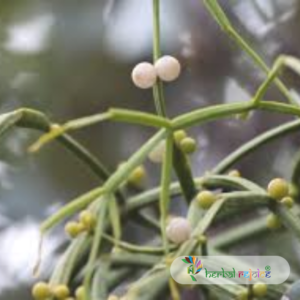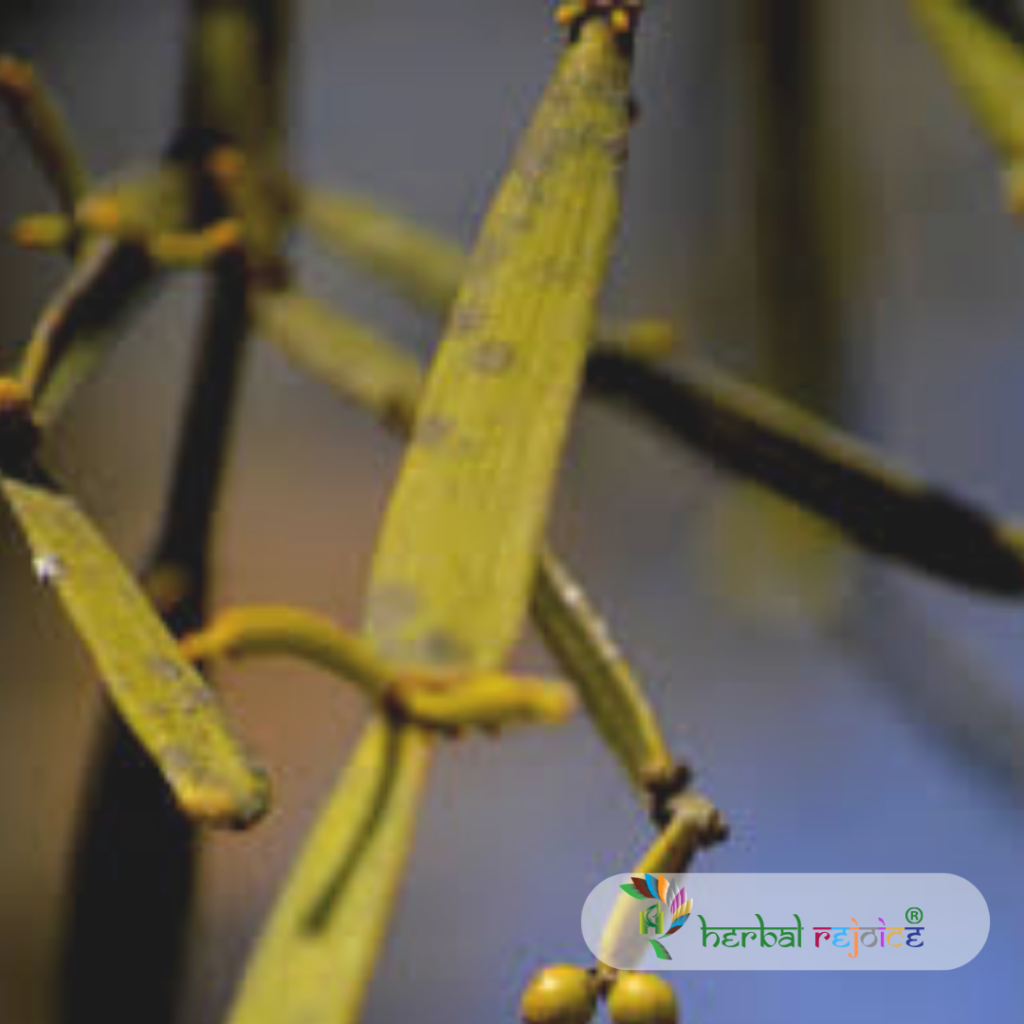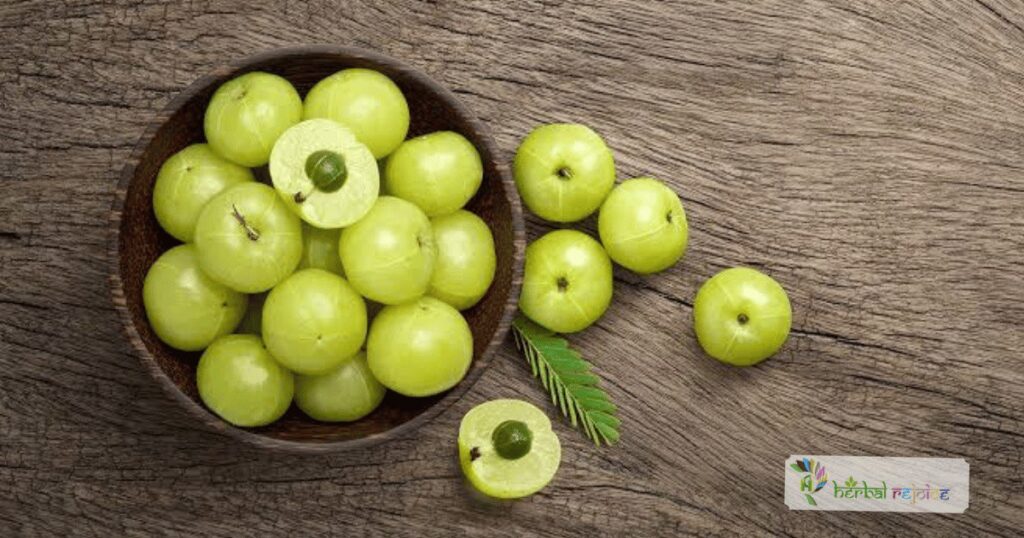Introduction
Viscum articulatum Burm., also known as Bandaak in Ayurvedic medicine, is a parasitic plant found in most parts of India. It belongs to the Viscaceae and Loranthaceae family. This plant is commonly found in Western India, where it acts as a superparasite on Loranthus sp., which itself is a parasitic plant on Eugenia sp.
Medicinal Uses
In Ayurvedic medicine, Viscum articulatum is known for its various medicinal properties. It is considered to be a febrifuge and aphrodisiac. Additionally, the paste made from this plant is often applied to bone fractures to facilitate healing.
Chemical Constituents
Studies have found that Viscum articulatum contains several bioactive compounds, including oleanolic acid, ceryl oleanolate, and meso-inositol. These compounds contribute to the plant’s medicinal properties and may have potential therapeutic applications.

Different names of Viscum articulatum
In folk medicine, Viscum articulatum is known by different names. It is called “Panapuuduu” in Maharashtra and “Bodobaando” in Gujarat. These names reflect the traditional use and cultural significance of the plant in these regions.
Viscum articulatum is a plant with immense potential for further research and exploration. Its unique properties and traditional uses make it a fascinating subject for both Ayurvedic medicine and modern scientific studies. With continued research, this plant may provide new insights and advancements in the field of natural medicine.
Conclusion
Overall, Viscum articulatum Burm. is a valuable plant in Indian traditional medicine. Its wide distribution, parasitic nature, and medicinal properties make it an intriguing subject for study. As more is learned about this plant, its potential benefits may be harnessed for various health conditions.
Frequently Asked Questions
What is Viscum articulatum Burm.?
Viscum articulatum Burm. is a parasitic plant found in India, particularly in the Western regions, known for its medicinal properties.
What family does Viscum articulatum belong to?
It belongs to the Viscaceae and Loranthaceae families.
What are the traditional medicinal uses of Viscum articulatum?
It is used as a febrifuge (fever reducer) and aphrodisiac, and its paste is applied to bone fractures for healing.
What are the key bioactive compounds found in Viscum articulatum?
Key compounds include oleanolic acid, ceryl oleanolate, and meso-inositol.
How is Viscum articulatum used in Ayurvedic medicine?
It is used both internally for fever and as a paste for external application on fractures.
What are the local names for Viscum articulatum in India?
It is known as Panapuuduu in Maharashtra, Bodobaando in Gujarat, and Bandaak in Ayurvedic medicine.
Where is Viscum articulatum commonly found?
It is commonly found throughout India, especially in the Western Ghats, growing as a parasite on various plants.
What conditions can Viscum articulatum help treat?
It may help treat fevers, enhance libido, and assist in the healing of bone fractures.
Does Viscum articulatum have any known side effects?
There is limited research on side effects, but it is important to use it under supervision if you’re considering it for medicinal purposes.
Can Viscum articulatum be used in modern medicine?
While it has traditional uses, further research is needed to validate its efficacy and safety in modern medical applications.
How does Viscum articulatum help reduce fever?
Its febrifuge properties are attributed to its bioactive compounds, which may help lower body temperature.
Is Viscum articulatum safe for pregnant or breastfeeding women?
There is insufficient information on its safety for pregnant or breastfeeding women; consultation with a healthcare provider is recommended.
How should Viscum articulatum be prepared for medicinal use?
Typically, the leaves and stems are prepared as a paste for external application or used in decoctions for internal use.
What is the growth habit of Viscum articulatum?
It grows as a parasite on host plants, extracting nutrients while benefiting from the host’s structure for support.
Are there any research studies on Viscum articulatum?
Research is limited, but studies are ongoing to explore its chemical composition and therapeutic potential.
How does Viscum articulatum compare to other mistletoes?
It shares similarities with other mistletoe species but has unique properties and uses in traditional medicine.
Can Viscum articulatum interact with other medications?
Potential interactions are not well-documented, so consulting a healthcare professional before use is advisable.
What regions in India have the highest concentration of Viscum articulatum?
It is primarily found in Western India, including states like Maharashtra and Gujarat.
Is there any folklore associated with Viscum articulatum?
Like many medicinal plants, it may have cultural significance and folklore in local traditions, although specific stories vary.
What future research is needed for Viscum articulatum?
More studies are needed to understand its pharmacological effects, safety profile, and potential applications in modern medicine.


